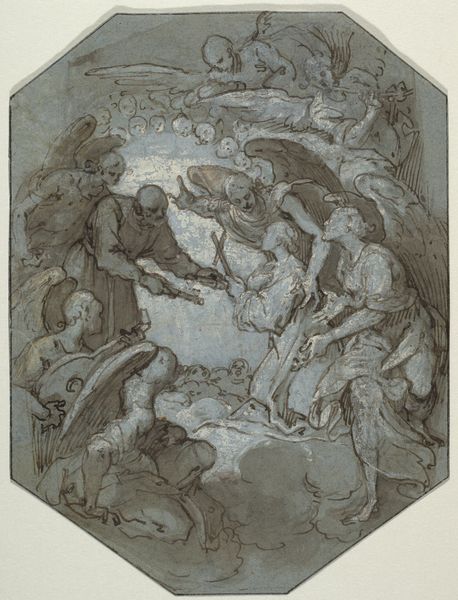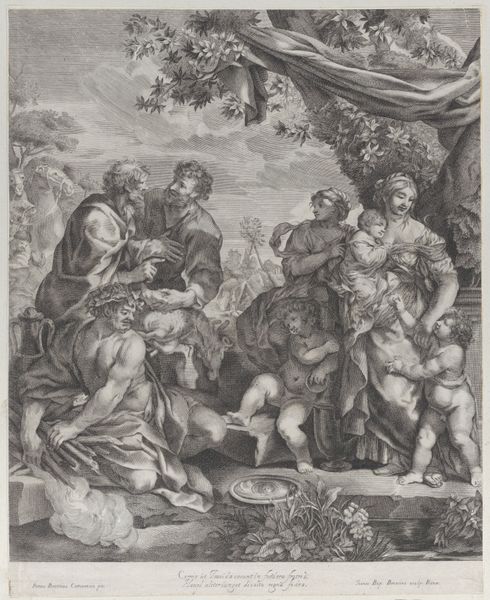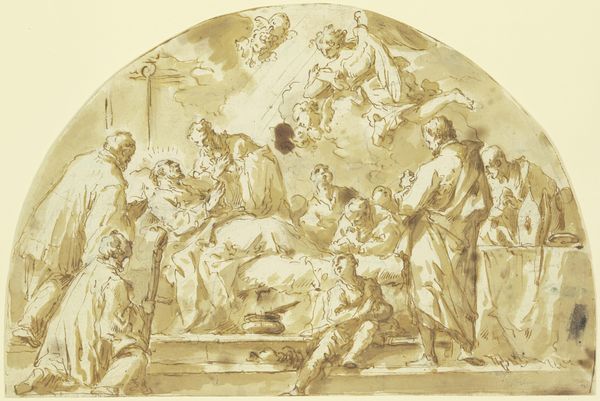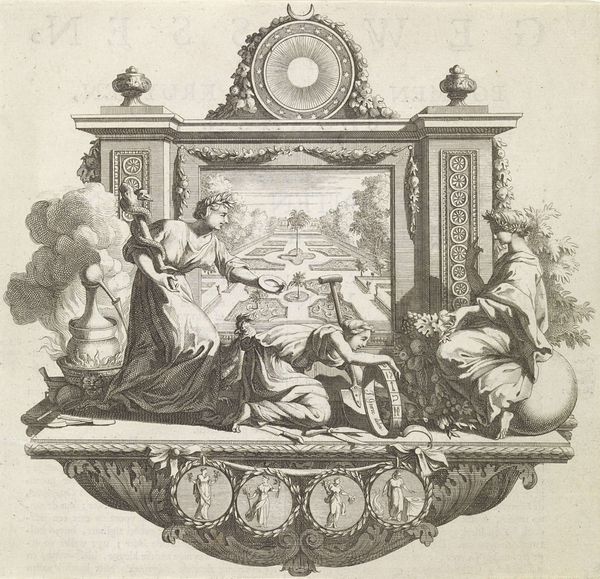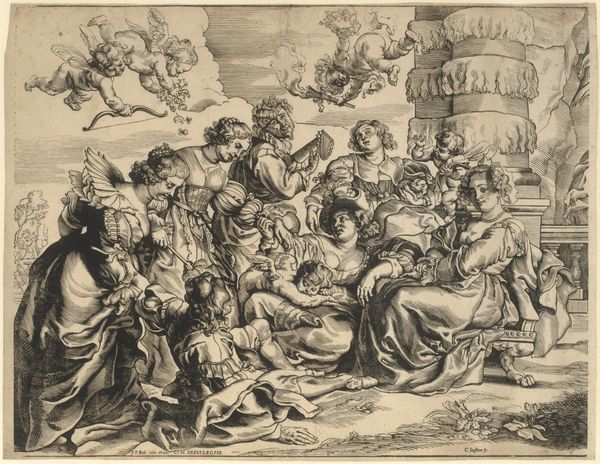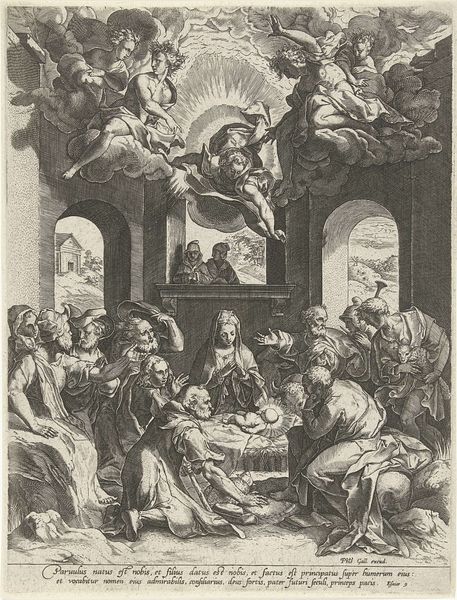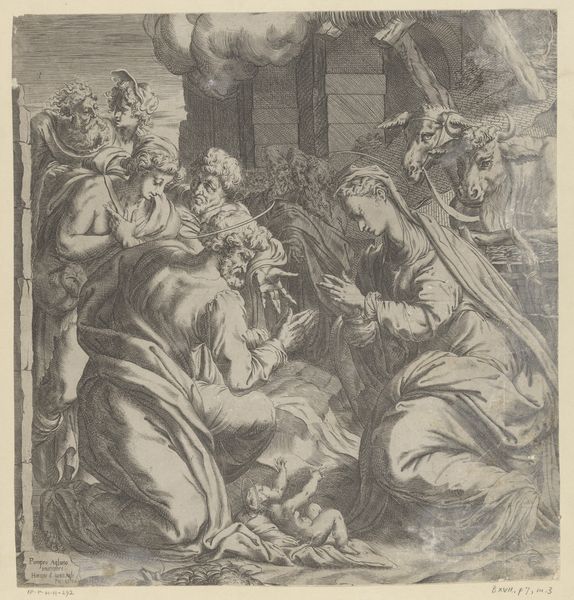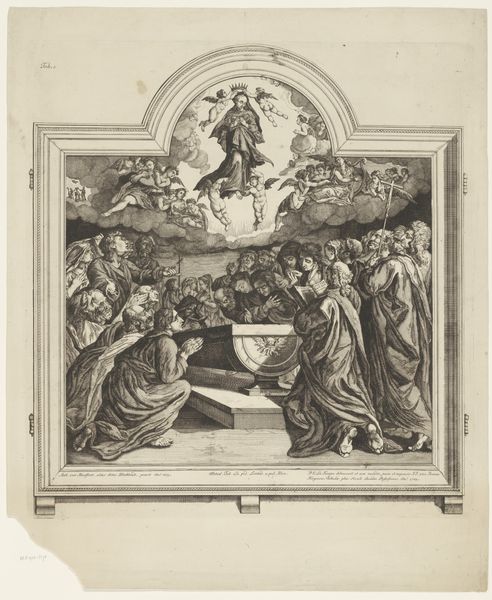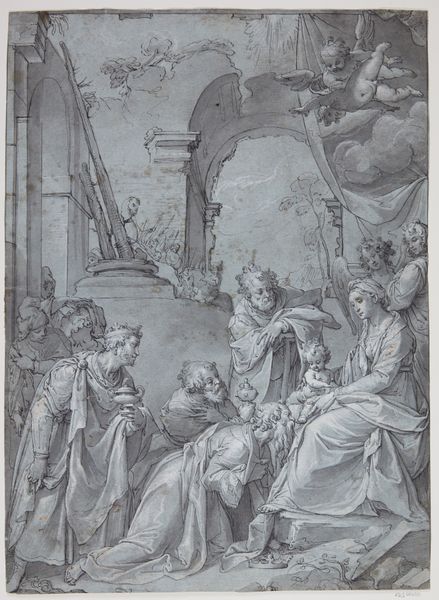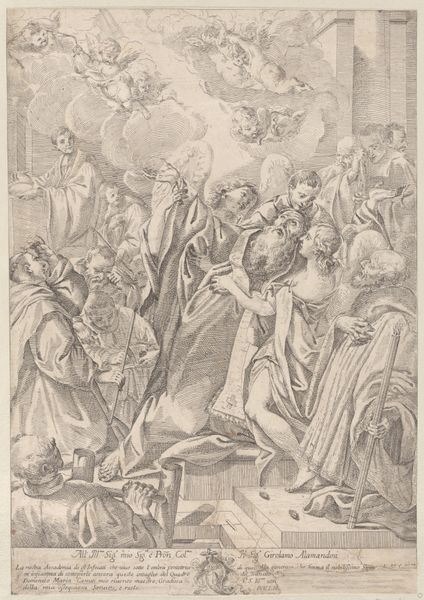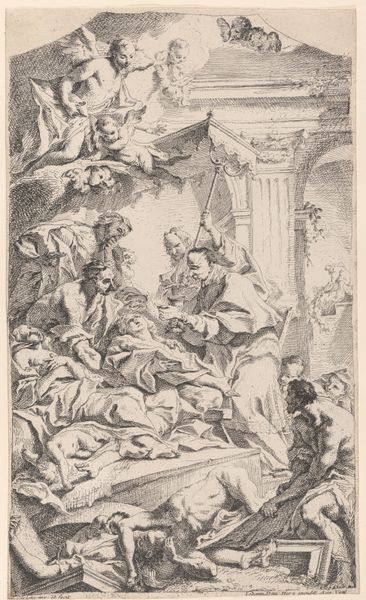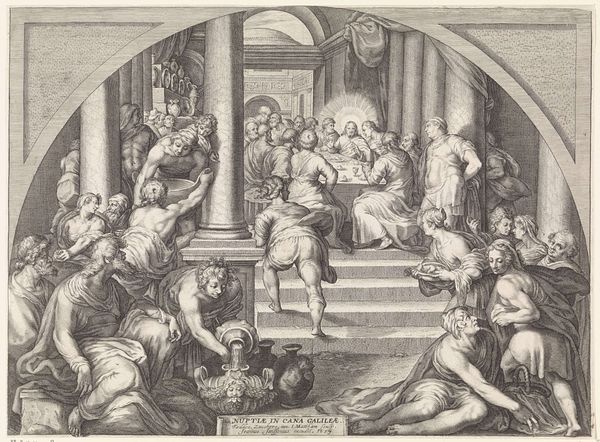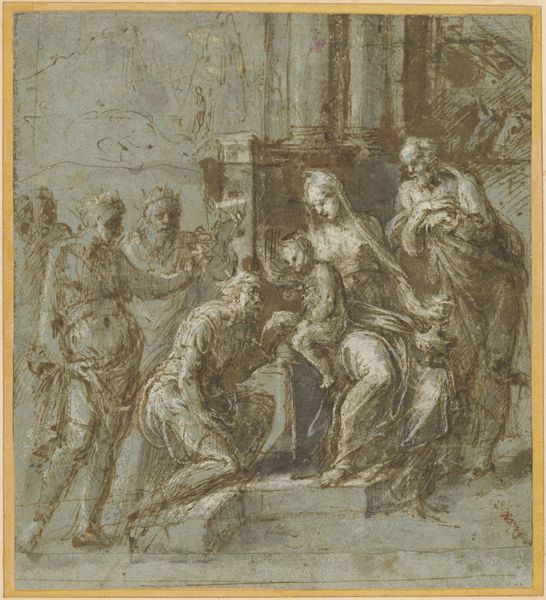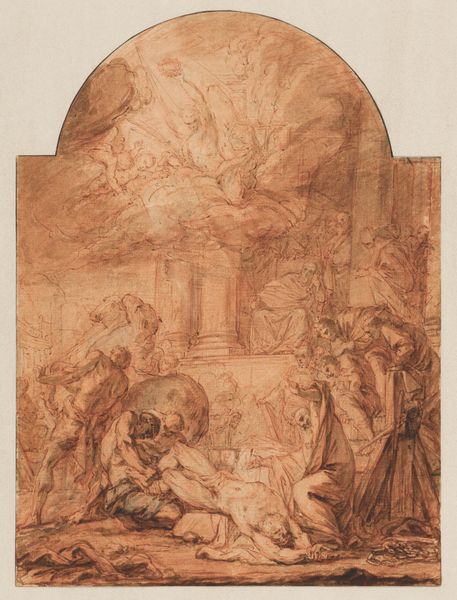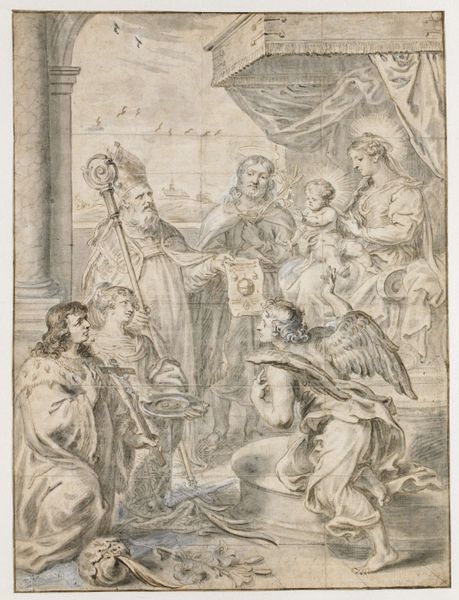
tempera, painting, oil-paint
#
portrait
#
tempera
#
painting
#
oil-paint
#
figuration
#
oil painting
#
child
#
underpainting
#
arch
#
christianity
#
painting painterly
#
history-painting
#
italian-renaissance
#
early-renaissance
#
angel
#
christ
Copyright: Public domain
Curator: Before us hangs Sandro Botticelli's "Madonna with Child and Three Angels," a tempera on panel completed around 1493, currently held in the Biblioteca Ambrosiana in Milan. What strikes you first about it? Editor: There’s a strange melancholy that pervades, even with the angelic figures. Mary’s downward gaze and the somber colors lend the scene a weighty atmosphere despite the delicate brushwork and the softness in the figures' faces. Curator: Indeed, the painting presents a fascinating blend of sacred symbolism and human emotion. The Madonna, positioned beneath a canopy that evokes both domesticity and divine protection, seems lost in contemplation. The Christ Child's interaction with the angels becomes less a scene of joy and more a premonition. Editor: And those angels, specifically: the presence of those youthful, sexless beings has a deeply problematic history related to constructions of ideal and dangerous beauty through male projections of female, racial, and sexual identity. Even with Botticelli’s fame, these forms should make the contemporary viewer squirm. Curator: Those figures remind me of the concept of Platonic love and ideal forms – representing the heavenly messengers and spiritual aspiration. Their delicate beauty embodies a kind of spiritual perfection, a concept deeply rooted in Renaissance humanism's synthesis of Christian theology and classical philosophy. And if they have racial associations for you, then that indicates the extent to which, still today, art opens the door for the questioning of our own ideas around sexuality, spirituality, gender, race, and desire. Editor: It also suggests to me how images continue to shift and alter depending on who the beholder may be. Are we seeing through their eyes or have we, with a 21st century sensibility, gained clarity and more awareness? I wonder… Curator: Yes, exactly. I would contend that the potency of Botticelli’s "Madonna with Child and Three Angels" rests not only in its beauty but also in its continued ability to reflect, mirror, and make strange the assumptions of subsequent generations. Editor: I agree, thinking about its capacity to stir debate and questions concerning our roles and values. It’s powerful, isn’t it?
Comments
No comments
Be the first to comment and join the conversation on the ultimate creative platform.
